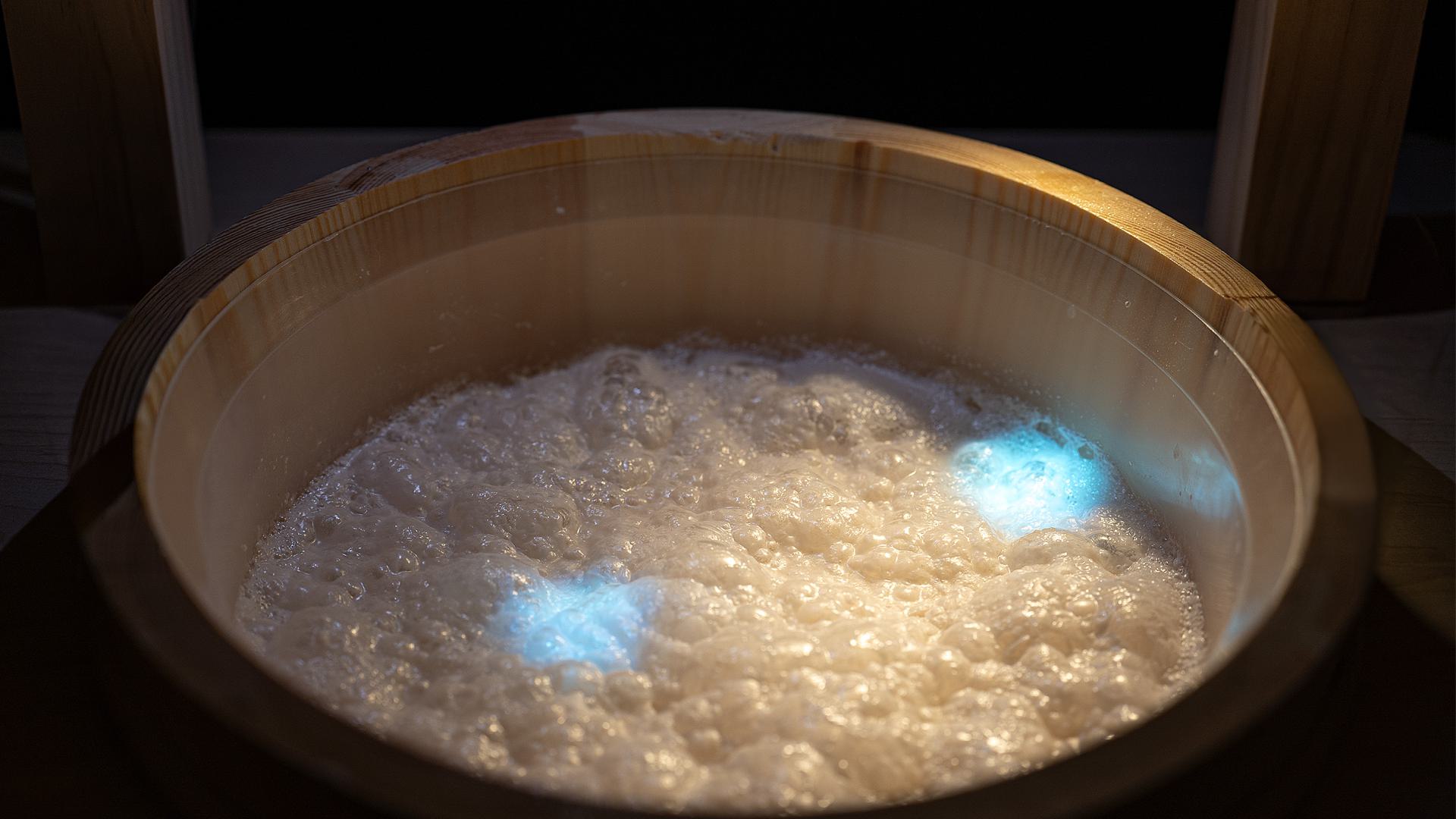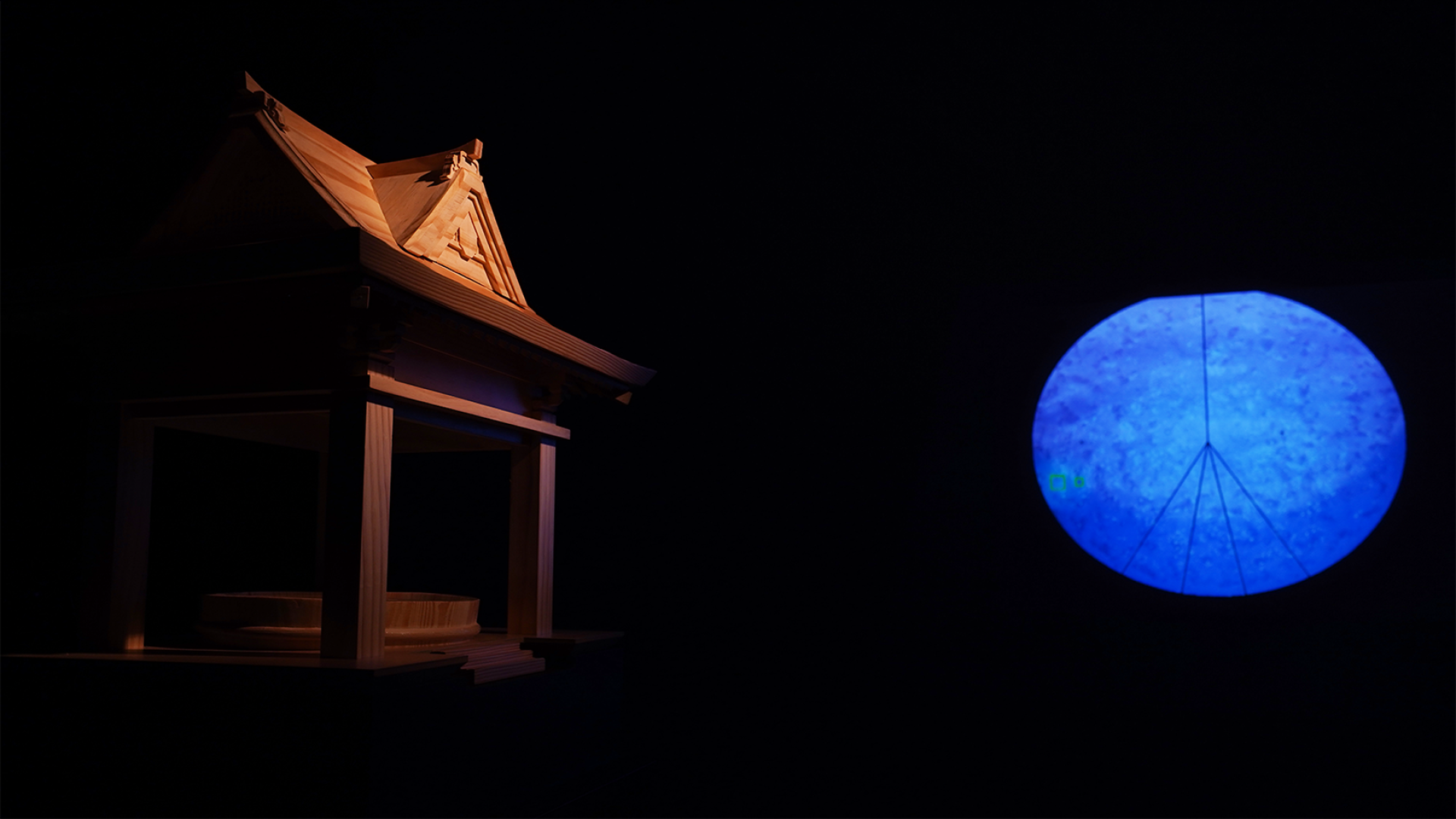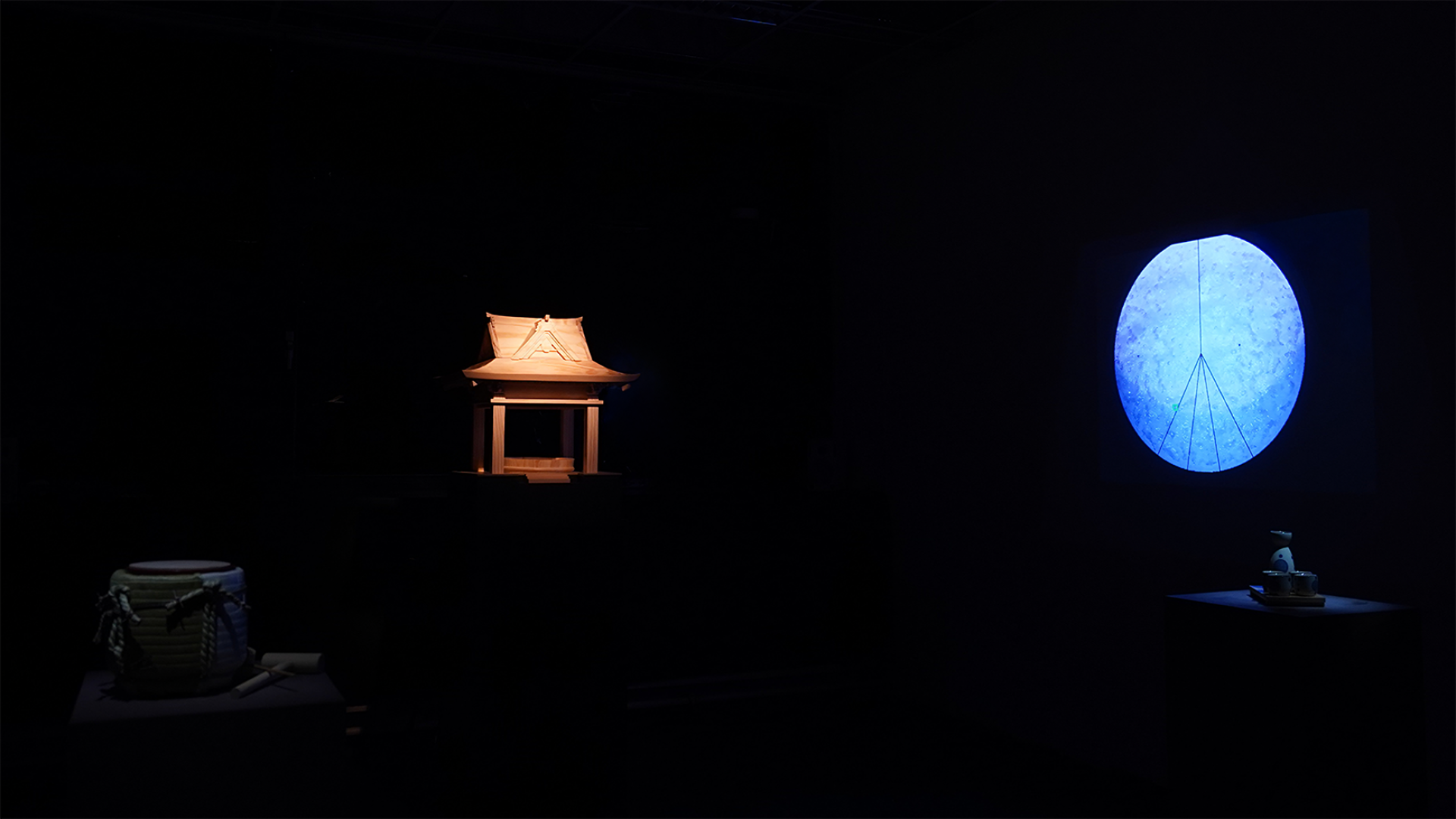Who accounts as a creator? Human alone, or yeast as well?
Amidst recent modern technologies that often separate us from organic processes, we find ourselves returning to fundamental questions: How might we forge more attentive relationships with the microscopic worlds that sustain us? Micro Orchestrism invites visitors to question traditional hierarchies of creative expression by positioning fermenting yeast as musical collaborators. Inspired by traditional sake brewing practices, this installation positions fermentation as both ancient technology and collaborative art form. The system captures the micro-bubbles created by yeast respiration during fermentation, translating these biological processes into tones from traditional gagaku instruments. This creates an evolving musical composition co-created by both human performers and microorganisms, exploring new forms of interspecies collaboration.
Gagaku: Co-Weaving Beauty with the More-Than-Human
Gagaku, Japan’s ancient court and ceremonial music, has carried its modes, practices, and natural-material instruments with remarkable continuity for over fourteen centuries. Unlike compositions that purge “noise” in search of a definitive masterpiece, gagaku is performed chiefly outdoors and uniquely welcomes contingencies—pine tree breeze, river murmurs, and even a baby’s cry—folding them into its beauty. Gagaku’s sound is thick with overtones and noise―textures that abound in nature. In light of these observations, could gagaku be read as music performed in concert with nature? In this installation, human-played gagaku and tones from gagaku instruments triggered by the respiration of yeast co-weave a living soundscape—an ongoing practice of co-creating beauty with nonhuman life, bridging traditional and contemporary sound practices.
Care or Control? A Negotiation with Microorganisms
In fermentation, microorganisms are the principal makers of flavor. Are they merely guided followers of humans, or are they creators? Rooted in Japanese animism—the worldview that agency is not exclusive to humans—some Japanese sake brewers characterize microbes as persons with will and feeling. Attuning all five senses, they read the microorganisms’ “voice” to assess their condition and collaborate with them to achieve depth of flavor. Such attitude signals a stance of respect and care, yet brewers also regulate microbial environments to secure consistent taste. Sake brewing thus unfolds as an art of negotiation between humans and microorganisms. In our pursuit of technological advancement, we often overlook the sophisticated biotechnologies that have sustained human cultures for millennia. This installation suggests that the future of art-technology-society relationships might be found not only in digital innovation but in renewed attention to the living processes that precede and exceed human design—processes that might speak to us, if we cultivate practices of listening.

 Toilets available
Toilets available
 Partially wheelchair accessible
Partially wheelchair accessible



